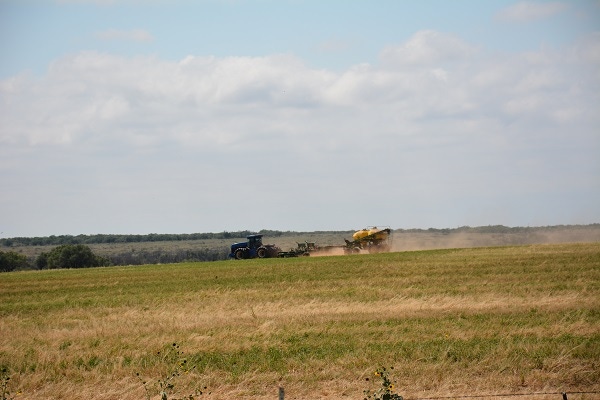
Calling it a seller's market in recent years, economists say the trend for higher farmland values over the last decade may have finally peaked and predict lower crop prices and the possibility of higher interest rates in the months ahead could cause a weakening of land values.
The decline in farmland values may not be a major concern, however, says Michael Langmeier, associate director of the Center for Commercial Agriculture at Purdue University.
"We are looking at about a 5 percent to 10 percent correction over each of the next three years," he said. "It's normal for a market that has been so strong to take a little breather."
The latest trend toward lower farmland values has already been noted in many regions. In Iowa, for example, the latest figures from the state’s ag land realtors show a decrease of 5.6 percent over the last year. The same can be said for most farmland prices in Kansas where prices have slowly been falling in recent months.
According to the Purdue Farmland Value Survey, Indiana farmland nearly tripled in value from 2003 to 2013, rising from an average of $2,509 per acre to $7,446 per acre. Langemeier said the rally was due in large part to the increased production of corn-based ethanol and strong export markets for soybeans, which drove crop prices higher and made farmland a more attractive investment.
For the latest on southwest agriculture, please check out Southwest Farm Press Daily and receive the latest news right to your inbox.
Grain effect
But corn and soybean prices have been in a tailspin recently, falling to their lowest levels in five years on expectations of a record yield and a large global grain surplus.
"Commodity prices do have an impact on farmland values, but they're not the only factor," Langemeier said. "What happens with interest rates will also help determine the severity and length of any downturn in farmland values."
But while farmland values have peaked in much of the nation, exceptions exist. The market for high quality cropland remains steady throughout the High Plains with stronger values in the western part of the region. Overall, area values are holding steady with some slight reductions from values 18 to 24 months ago, according to Brock Thurman, AFM, Farmers National Company area vice president.
Selective demand for high quality farmland continues as prices have leveled somewhat in Iowa, Missouri, Minnesota and South Dakota, according to Sam Kain, national sales manager for Farmers National Company, who says buyers are choosy now but will pay for quality land.
Langemeier says interest rates have been held in check for the past five years by a slumping economy, and in periods of recession or slow economic growth, the government tends to keep rates low to stimulate economic activity. Lower interest rates make it less expensive to borrow money for large purchases, such as farmland, a trend that he says may soon be changing.
With the national economy beginning to show signs of recovery, a short-term rate hike is likely sometime in 2015, he said. Higher interest rates typically mean lower demand for farmland.
"That would put some additional downward pressure on the market," he said, "but federal policymakers are not likely to raise rates too high and risk sending the economy back into recession."
A decline in cash rental rates is also likely, Langemeier said. If current price projections hold, cash rental rates are expected to drop 5 percent to 10 percent in each of the next three years.
Contrary to what may be the beginning of a trend toward lower farmland values, in Texas and parts of the farm-rich Sun Belt, activity remains brisk, fueled by low supply of quality land for sale and continued high demand. Year-end figures for 2013 in Texas, for example, indicate an overall price increase of nearly 10 percent over 2012 prices. The Texas statewide, size adjusted average price was about $2,160 per acre, a figure that is likely to remain stable according to economists.
About the Author(s)
You May Also Like




